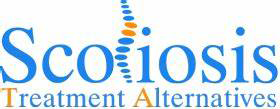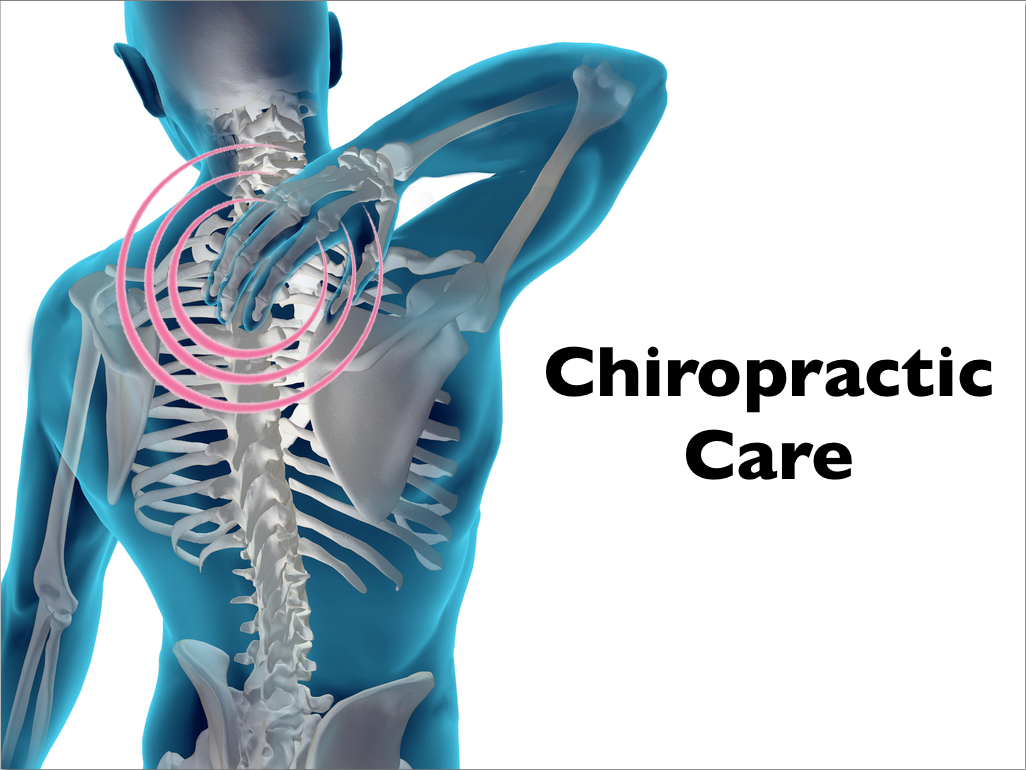Dissatisfaction With Conventional Care For Scoliosis
Most people who seek out chiropractic care for scoliosis fall into one of two categories. The first are parents of children recently diagnosed with scoliosis. They tend to seek alternative care because they were dissatisfied by their Orthopedists recommendation to merely “watch and wait for the scoliosis to worsen” before they act. They feel they should at least try and do something to keep their child’s scoliosis form getting worse so that they could avoid surgery.
The other category of patients who often seek chiropractic care for scoliosis are adults with pain related to their scoliosis. They are often told by their doctors that they “just need to learn to live with it” as nothing short of surgery will help.
Dissatisfied with this rather fatalistic approach by conventional medicine many people from both groups strike out on their own to find actual solutions to their scoliosis. Since scoliosis is a condition affecting the spine it natural that they would seek out Chiropractic Care. Chiropractic care is a system of treatment that centers on improving the function of the spine and nervous system by relieving interference. It is the most commonly utilized alternative type of treatment used in the US.
The question is does chiropractic care for scoliosis help?
What is Chiropractic Care
While the techniques used by chiropractors today vary greatly from one chiropractor to the next, but there are some commonalities.
Chiropractic care, as it is known today was first introduced in the late 1800’s by a man named D.D. Palmer. His son, B.J. Palmer formed Palmer College of Chiropractic in Davenport Iowa and is widely considered the individual most instrumental in expanding the fledgling healing art to become the most popular alternative form of health care in the United States.
Because of the emphasis on the spine and its position, most chiropractors are very apt at determining the nature and degree of abnormal spinal curvatures by using X-rays. Most chiropractors treat patients primarily by manual adjustments of joints of the body, especially the spinal column. In addition, many chiropractors use supplementary measures that can be beneficial for scoliosis such as postural wedges, heal lifts and exercise therapy. While exercises are usually taught bilaterally (done the same on both sides of the body) when exercise therapy is prescribed for scoliosis should only be done unilaterally and it must be specifically prescribed for each patients unique scoliosis curve pattern.
In examining if chiropractic care by itself is effective for reducing scoliosis curvatures, the short answer would appear to be “no”.
In searching the medical literature for studies on the effectiveness of chiropractic care for scoliosis did not show any large scale research studies on the topic.
Is Chiropractic Care for Scoliosis Effective By Itself?
A recent Med-line search of the research literature that did turned up some smaller clinical studies but they did not show any evidence to suggest that chiropractic adjustments alone can be beneficial in reducing curvatures in cases of a structural Idiopathic Scoliosis, but there was evidence to suggest that certain types of chiropractic care could be good at improving a functional scoliosis.
Functional Scoliosis vs Structural Scoliosis
There is a fundamental difference in a scoliosis that is purely functional (meaning a secondary adaptive change to a primary problem in another area of the body) and a structural scoliosis (meaning that there are actual bony changes to the vertebra of the spine). The characteristics of a functional scoliosis is a mild long sweeping curvature that spans many vertebra often with little rotation of the spinal segments.
It appears that chiropractic care for scoliosis may be best when addressing issues related to a purely functional scoliosis. If a functional scoliosis remains untreated than it can eventually become a structural scoliosis. Many cases of scoliosis will have a combination of both functional and structural components, so it is important that the practitioner identify and address both to be able to provide the best results.
While the chiropractors will often adjust idiopathic scoliosis patients with structural changes which can have a benefit by addressing the restriction and joint dysfunction at the concave side of the segments at apex of the curve it’s critically important that they only adjust it into the direction of correction. Generalized adjusting of the spine (adjusting both sides of the body the same way) can be a problem in scoliosis. While adjusting the spine into the direction of correction can help open up the curve and that would be a good thing. Doing the exact same adjustment in the other direction can destabilize the apical segment further causing the curve to worsen.
So it’s vital that a chiropractor have knowledge in how to specifically adjust a scoliotic spine only into the direction of correction so that they avoid inadvertently causing a worsening of the curve.
Is Chiropractic Care for Scoliosis Effective When Combined With Rehabilitation Therapies For Scoliosis
The short answer is yes. In fact, when chiropractic is used in combination with other types of scoliosis specific rehabilitative therapies, it combines the best of both worlds. While chiropractic care can be helpful in relieving pain and helping restore mobility, by itself it does nothing to strengthen the specific weakened muscles in a scoliotic spine.
The type of treatment needed to help improve scoliosis curvatures are ones that help lengthen and strengthen the weakened muscles on the concave sides of the curve so that the muscles on the opposite side of the spine that are straining to hold the body up can start to relax as the body moves back towards the midline.
The most recent positive study was a small retrospective study of 28 patients treated with a course of chiropractic and rehabilitative exercises for 6 months was reported in the Journal of Chiropractic Medicine in September 2011. The report concluded that a multi- dimensional chiropractic and rehabilitation treatment program can significantly ease the pain and disability of adult scoliosis as well as some reduction in the Cobb angle and improvement in vital lung capacity that appeared to stay stable in a 24 month follow up.
Rehabilitative Therapies Used In Chiropractic Care For Scoliosis
Corrective Movement Rehabilitative Therapies that are scoliosis specific based on the individuals curve pattern are the most effective way of helping strengthen the specific weakened muscles in the spine to move the body back towards the midline. These can include the use of a dynamic tension orthosis called SpineCor, as well as scoliosis specific exercises call the Schroth Method as well as myofascial therapies such as Active Release Technique applied specifically for scoliosis based on the curve pattern. There are also other treatments that can also help with scoliosis by correcting factors that can drive a scoliosis to worsen.
Find Out If Corrective Movement Rehabilitative Therapies Can Help Your Scoliosis
Find out if our types of corrective movement therapies are right for your (or your child’s) scoliosis by scheduling a Free Scoliosis Phone Consultation.
What If I Am Already Receiving Chiropractic Care For Scoliosis?
If you are already working with another chiropractor, not a problem. We can co-manage your scoliosis care with your chiropractor. We’ll provide you with corrective movement therapies while your chiropractor would continue to manage your adjustments.
References:
1. Outcomes for adult scoliosis patients receiving chiropractic rehabilitation: a 24-month retrospective analysis 2. Scoliosis treatment using a combination of manipulative and rehabilitative therapy: a retrospective case series- Study on Chiropractic Care for Adolescent Scoliosis
- Adolescent Idiopathic Scoliosis Treatment Using Pettibon Corrective Procedures: A Case Report
- The Use of Upper Cervical Chiropractic Care for a Patient with Adolescent Idiopathic Scoliosis
- Eriksen K. Correction of juvenile idiopathic scoliosis after primary upper cervical care: a case study. Chiropr Res J, 1996; 3(3):25-33.
- Basu KS, Blankenship NK. Chiropractic and scoliosis: a case study. Chiropr Res J, 1999; 6(2):71-6.


Dear Dr. Diaz,
Great article, however your comment: “A case study of a 15 year old girl treated with an upper cervical chiropractic technique called NUCCA showed that she had a significant reduction in her scoliosis curvature with just one painless instrument adjustment to the cervical spine. ” NUCCA, does not use an instrument adjustment. My Dad, Dr. Corbin C Fox Jr, was a Grostic Practitioner (a fore runner to the NUCCA technique.) which is a hand adjustment. I am an Atlas Orthogonist and we use the Dr. Roy Sweat Atlas Orthogonal instrument to adjust the atlas.
So was the 15 year old girl treated by NUCCA or Atlas Orthogonality?
Sincerely,
Dr. Corbin C Fox III
Corbin,
Sorry for the delayed reply and my mix up of upper cervical techniques. I went back to the article that I referenced and confirmed that it was NUCCA, not Atlas Orthogonal that the author was referring, so I’ve removed the reference to “instrument” adjusting. Thank you for bringing that to my attention. Dr. Brett Diaz, D.C.
I’am having a premed assessment 1st Oct ready for day surgery on 15 Oct facat injections. I’ve had injections before but don’t last,unfortunately my scoliosis has got much worse in recent years,got two crutches & a wheelchair.
Wendy,
Please give us a call on Monday for a Free Phone Consult to discuss your scoliosis to see if our treatments are right for you.
Dr. Brett Diaz, D.C.
Sir I am having a mild scoliosis and my head head is a little forward of my body so can I do some neck exercises so that can heal my atlas if I have some problem in it and my scoliosis
If the issue is with your atlas then I would recommend that you see an upper cervical specific chiropractor for an evaluation of your atlas and occiput instead.
If the atlas misalignment is the issue then they will be far more effective in helping restore the balance in that region which can help relieve some of the abnormal proprioceptive input that can be a driver for your scoliosis to worsen.
How many adjustments/sessions needed to finally fix scoliosis?
When you say “Fix” a scoliosis, I’m assuming you mean get rid of the curve completely.
In general, there are no amount of adjustments that will “fix” a scoliosis. The reason for that is that unless a scoliosis curve is caught and corrected very early on, before any defomration of the vertebral bodies have a chance to occur, then the deformation will always cause some degree of curvature. There are of course, exceptions such as with a functional scoliosis due to compensation from an altas subluxation, the curves are generally mild long sloping curves and are a result of a distortion somewhere else in the spine. If the altas, is that somewhere else, once you restore the alignment there the scoliosis will self correct. That can occur with one adjustment, if done right.
Chiropractic care alone has not found to be effective in reducing a scoliosis, but it is effective at relieving pain and restoring or maintaining overall mobility of the spine in patients with scoliosis.
Indeed effective. It was late before I have my spine adjusted due to financial constraints. After a series of adjustments, my spinal alignment gets significantly better.